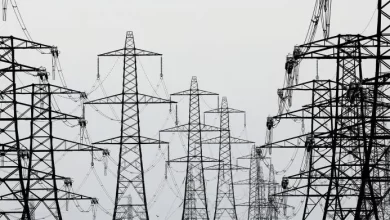Oil market outlook for 2018

The year 2017 was crude oil’s most bullish year. Much of the credit goes to the Organization of Petroleum Exporting Countries (OPEC) for a well-orchestrated campaign led by Saudi Arabia and Russia to enforce and extend supply curbs by the oil cartel and other producing nations. The gains indicate that the global glut that has dogged the market since 2014 is shrinking.
International benchmark Brent crude futures ended the year with a 17 percent rise, supported by ongoing supply cuts by top producers OPEC and Russia as well as strong demand from China. The last week of 2017 saw futures trading above $60 a barrel in New York and $67 in London for the first time since mid-2015, after the two most important oil benchmarks surged more than 40 per cent from their doldrums in June. The spread between the benchmarks widened throughout the year, as Brent responded to the drawdown in supply from major world producers while US output continued to grow.
In the first half of the year, the OPEC cuts appeared to have little effect. But the cuts started to take a large bite out of inventories in the third quarter and the price rally ensued.
Earlier this year, oil prices slumped on concerns that rising crude production from Nigeria, Libya and elsewhere would undermine output cuts led by OPEC and Russia. But prices have rallied nearly 50 percent since the middle of the year on robust demand and strong compliance with the production limits.
OPEC’s 14 members collectively pumped around 32.35 million b/d of crude in November 2017, about 914,000 b/d lower than the same month of 2016, adjusted for Indonesia, which gave up its membership at the end of last year, and Equatorial Guinea, which became a member in May 2017. The reduction was less than the 1.2 million b/d pledged by the organization, but remarkably close to it, given that Libya and Nigeria, which are exempt from the production cut agreement, were pumping 490,000 b/d more in November compared with a year ago.
Other notable developments in 2017 included the return of geopolitics as a market mover, with outages in Libya, Iraq, the North Sea and Canada all contributing to higher prices. US shale also came roaring back in 2017, and those production gains are expected to continue into 2018.
The EIA reported a drop in US oil production, with last week’s output falling by 35,000 bpd. Also, crude inventories fell by a robust 4.6 million barrels for the week ending on December 22, 2017. The report added some bullish momentum to oil on the final trading day of the year.
What to expect in 2018
Opinions are divided on whether oil markets can maintain this upwards momentum or where prices go from here. Some view oil as overpriced, with a price correction looming while others see oil prices grinding higher as 2018 wears on due to falling inventories. However, these are some of the things that will affect the direction oil prices will be headed in 2018;
President Trump has the opportunity to tear up the 2015 nuclear deal with Iran as every three months; he has to recertify the agreement. Trump will have that decision before him again in about two weeks. In the event there is no solution working with Congress and other allies, then the agreement will be terminated and the sanctions on Iran would be restored, which could lead to an escalation of conflict which will have huge impact on oil prices.
Worthy of note is the fact that China has issued crude oil import quotas totaling 121.32 million tonnes for 44 companies in its first batch of allowances for 2018. China’s imports at around 8.5 million bpd, already the world’s biggest, are expected to hit another record in 2018 as new refining capacity is brought online and Beijing allows more independent refiners to import crude. Though Barclay’s analysts say China’s economy is expected to slow in 2018, raising the risk of weaker-than-expected demand.
Geopolitical tensions can also add a wild card to the market mix. Venezuela, Iran and Saudi Arabia top the list of countries that could see oil-related disruptions in 2018. But at present, pipeline outages in Libya have supported oil prices. An explosion hit a pipeline knocking about 70,000 to 100,000 bpd offline. The incident provided a lift to oil prices, and it also highlights the risk to supply from some unstable countries. Libya managed to restore output to about 1 mb/d this year after several years of producing only a fraction of that amount. The disruption is expected to be resolved by early January.
2018 could see OPEC pitted against shale. Speculation is rising that American drillers will put more rigs to work next year as oil strengthens. For now, shale drillers are showing restraint, with the number of working rigs unchanged for the second week in a row, according to Baker Hughes data.
Also, Russia is starting to look at its shale potential, and large reserves are thought to be located in the Bazhenov shale in Western Siberia. It is thought to be the largest shale formation in the world. Up until now, Russia has relied on conventional sources, but Russian companies are starting to move into shale. Output from Russia’s shale is not expected before the mid-2020s, but it could be crucial to offsetting declines from mature oil fields.





